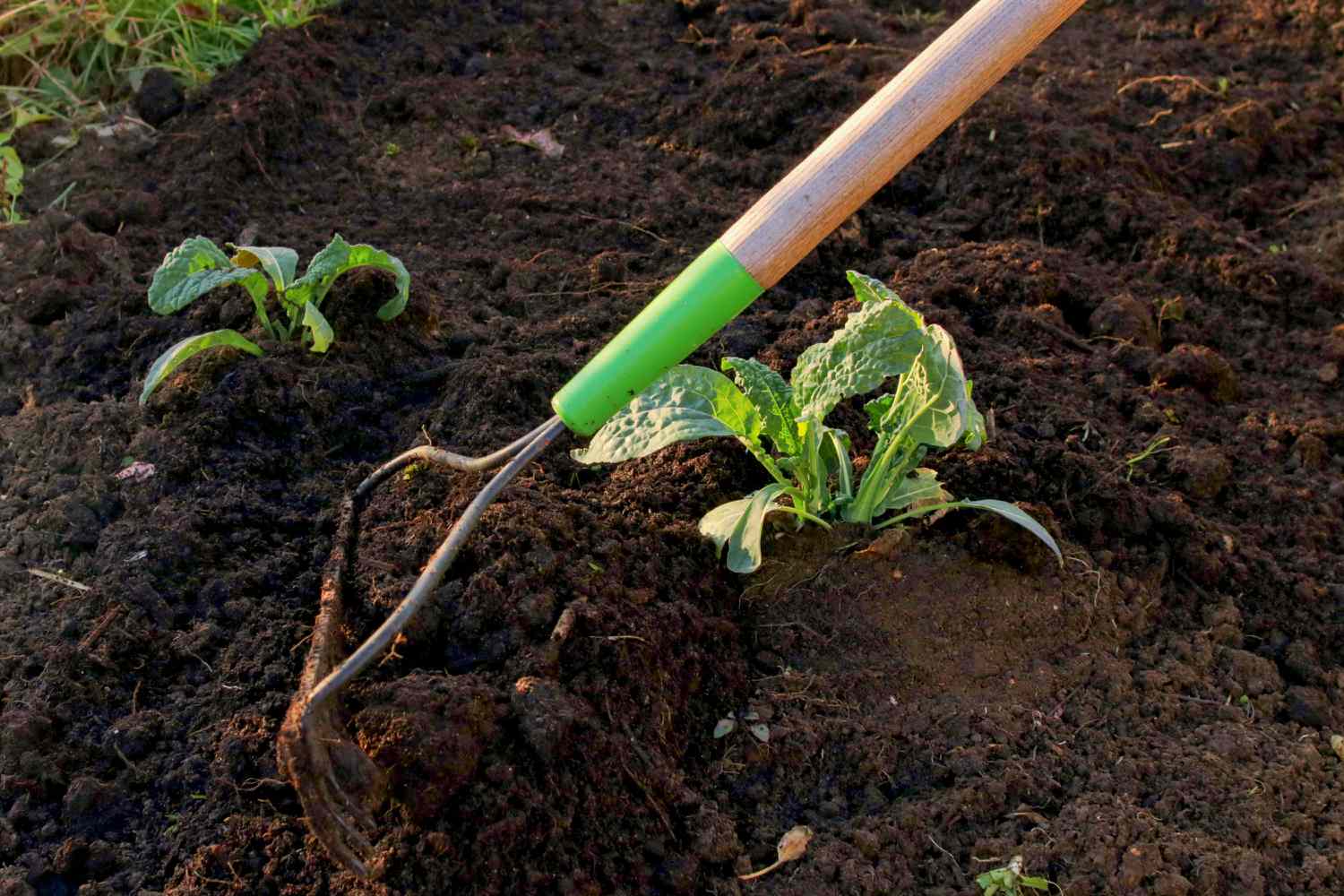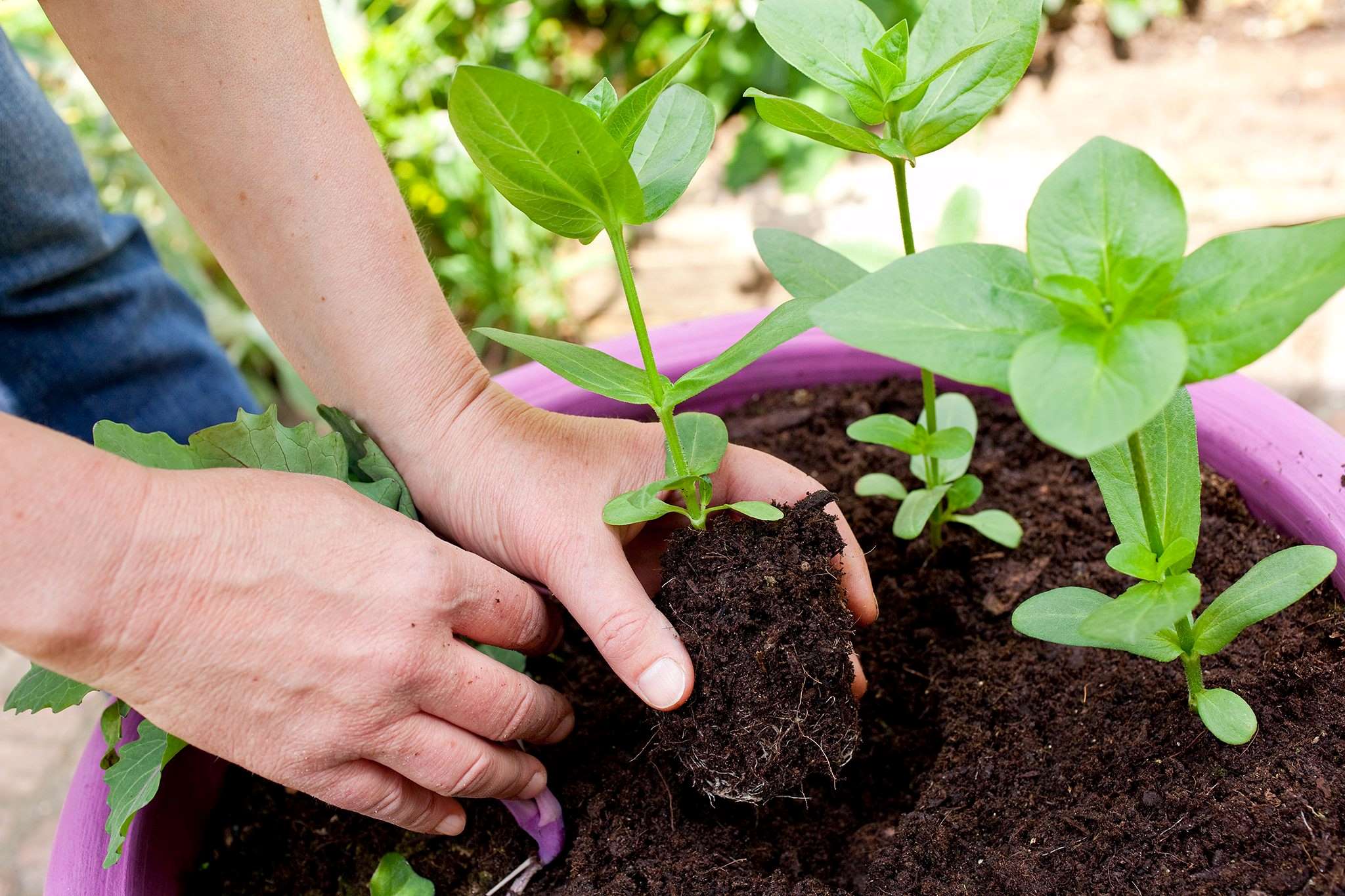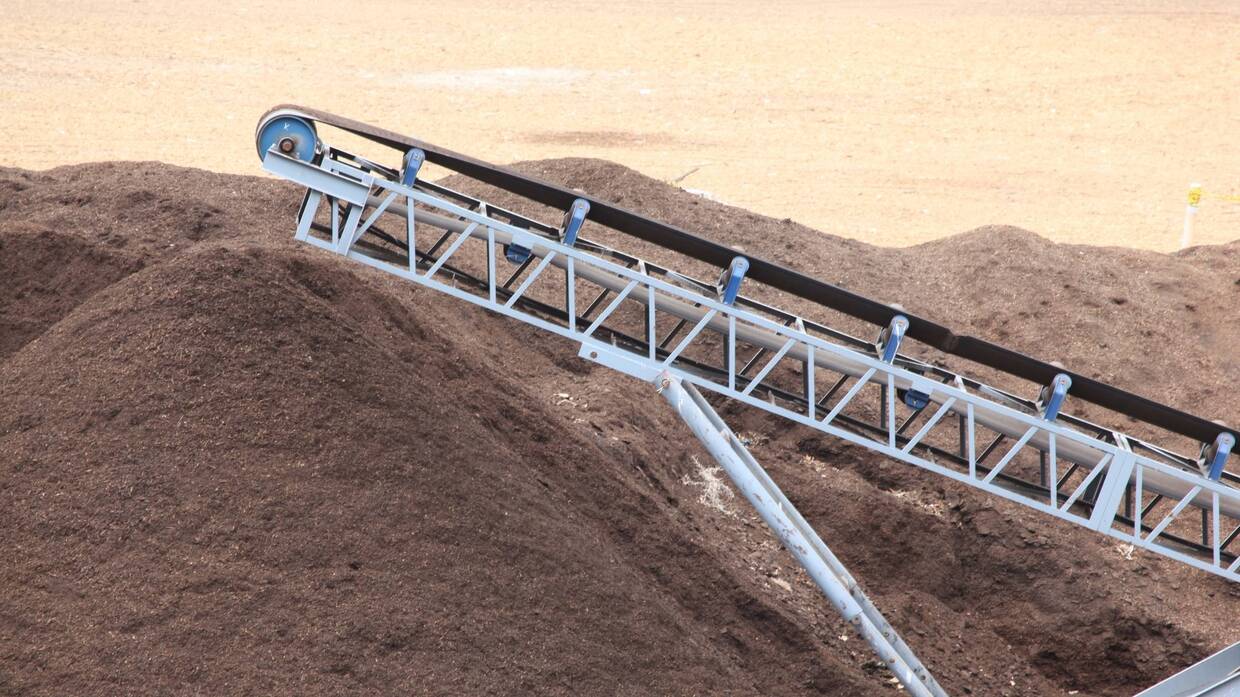Home>Gardening Basics>Understanding Soil>How Deep Should Topsoil Be For Garden


Understanding Soil
How Deep Should Topsoil Be For Garden
Modified: February 8, 2024
Discover the ideal depth for topsoil in your garden with our comprehensive guide. Gain a better understanding of soil composition and create the perfect environment for plant growth.
(Many of the links in this article redirect to a specific reviewed product. Your purchase of these products through affiliate links helps to generate commission for Chicagolandgardening.com, at no extra cost. Learn more)
Table of Contents
Introduction
Welcome to the world of gardening! Whether you’re a seasoned green thumb or a novice looking to start your own garden, understanding the importance of topsoil depth is crucial for successful plant growth. Topsoil is the uppermost layer of soil where most plants establish their roots and draw essential nutrients. The depth of this layer plays a vital role in determining the health and productivity of your garden. In this article, we will explore the factors that affect topsoil depth, discuss the optimal topsoil depth for a garden, and provide methods for assessing and improving the topsoil in your garden.
When it comes to growing vibrant, flourishing plants, the quality of the soil cannot be overlooked. Soil composition, structure, and nutrient content all contribute to plant health, but topsoil depth is particularly crucial. This upper layer of soil contains organic matter, microorganisms, and nutrients that support the growth and development of plants.
However, topsoil depth can vary significantly depending on various factors, including climate, geography, and human activity. Natural processes such as erosion and weathering can affect the thickness of the topsoil layer over time. Additionally, human activities such as construction, agriculture, and gardening practices can impact the depth of topsoil in a particular area.
Understanding the optimal topsoil depth for a garden is essential for ensuring the well-being of your plants. Adequate topsoil depth allows plants to anchor themselves firmly and access the essential nutrients they need to thrive. It also helps retain moisture, allows for proper drainage, and encourages healthy root development.
In the following sections of this article, we will explore different methods to assess the topsoil depth in your garden and discuss strategies to increase or maintain the depth of your topsoil. By following these guidelines, you can create an optimal environment for your plants and lay the foundation for a successful and bountiful garden.
Factors Affecting Topsoil Depth
Several factors influence the depth of topsoil in a given area. Understanding these factors can help you determine the current state of your garden’s topsoil and make informed decisions to improve its depth. Let’s explore some of the key factors affecting topsoil depth:
- Climate: The climate of a region plays a significant role in determining topsoil depth. In areas with higher precipitation, erosion rates are often higher, which can lead to thinner topsoil layers. On the other hand, drier climates can result in slower soil formation and, consequently, thicker topsoil layers.
- Geography: The geographical features of a landscape can impact topsoil depth. Sloping terrains are more prone to erosion, leading to reduced topsoil depth. In contrast, flat or gently sloping areas tend to accumulate more topsoil over time.
- Vegetation: The type and density of vegetation cover in an area can influence topsoil depth. Plant roots help stabilize the soil, prevent erosion, and contribute to organic matter decomposition, thus enriching the topsoil layer.
- Soil Composition: The composition of the underlying soil layers can affect topsoil depth. For example, soils with a high clay content tend to hold more water, which can lead to slower soil formation and potentially thinner topsoil depth.
- Human Activity: Human actions, such as construction, agriculture, and improper gardening practices, can significantly impact topsoil depth. Clearing land for construction or intensive plowing in agriculture can result in the removal of the topsoil layer. Similarly, improper gardening practices, such as over-tilling or not replenishing organic matter, can deplete topsoil depth over time.
These factors interplay to determine the depth and quality of the topsoil in your garden. By understanding how these factors influence topsoil depth, you can better assess the current state of your garden’s soil and take appropriate steps to maintain or improve it. In the next section, we will discuss the optimal topsoil depth for a garden and the importance of meeting this requirement for successful plant growth.
Optimal Topsoil Depth for Garden
When it comes to gardening, having an optimal topsoil depth is crucial for the health and productivity of your plants. The ideal topsoil depth can vary depending on several factors, including the types of plants you intend to grow and the specific region in which you live. However, a general guideline for the optimal topsoil depth is around 6 to 8 inches.
Why is this depth important? Well, a sufficient topsoil depth allows plants to establish strong root systems and access the necessary nutrients and water. It also provides a buffer against temperature fluctuations and helps retain moisture, promoting healthy plant growth. Additionally, deeper topsoil can provide a more stable environment for soil organisms, such as beneficial bacteria, fungi, and earthworms, which contribute to the overall health of the garden ecosystem.
It’s important to note that different plant species have varying soil depth requirements. For example, shallow-rooted plants, such as lettuce or radishes, typically only need a topsoil depth of 4 to 6 inches. On the other hand, deep-rooted plants, like tomatoes or fruit trees, may benefit from a deeper topsoil layer of up to 12 inches or more.
Considering the optimal topsoil depth for your garden is crucial, as it ensures that your plants have enough space to establish their roots and access the essential nutrients they need for growth. If your garden’s topsoil depth falls below the recommended range, it’s essential to take steps to increase or improve it.
In the next section, we will discuss various methods to assess the topsoil depth in your garden and determine whether it meets the optimal requirements. This information will help you make informed decisions about improving your garden’s topsoil depth to create an ideal growing environment for your plants.
Assessing Topsoil Depth in Your Garden
Assessing the topsoil depth in your garden is a crucial step in understanding the current state of your soil and determining whether it meets the optimal requirements for plant growth. There are various methods you can use to assess the topsoil depth in your garden:
- Visual Inspection: Start by visually inspecting your garden. Look for areas where the topsoil seems thinner or has eroded away. These areas may appear lighter in color or have exposed rocks or underlying layers of soil.
- Using a Trowel or Garden Spade: Take a trowel or garden spade and gently dig into the soil. Pay attention to the different layers as you dig deeper. The topsoil layer will typically be darker and richer in organic matter compared to the layers below.
- Soil Probe: A soil probe is a long metal rod or tube that can be inserted into the ground to measure soil depth. Push the soil probe into the ground and carefully pull it out. Measure the length of the soil probe covered with soil, which will give you an idea of the topsoil depth.
- Core Sampling: Core sampling involves using a soil auger or a hollow tube to extract a cylindrical soil sample from the ground. By examining the layers of soil within the core sample, you can determine the depth of the topsoil. Core sampling provides a more accurate assessment of the soil layers and their thickness.
When assessing the topsoil depth, it’s important to take multiple samples from different areas of your garden to get a comprehensive understanding. This will help you identify any variations or inconsistencies in topsoil depth across your garden.
Once you have assessed the topsoil depth, compare it to the recommended guidelines for optimal topsoil depth in the previous section. If your garden’s topsoil depth falls below the optimal range, don’t worry. In the next section, we will discuss methods to increase topsoil depth and improve the overall quality of your garden’s soil.
Methods to Increase Topsoil Depth
If you find that the topsoil depth in your garden is insufficient, there are several methods you can employ to increase it and create a more conducive environment for plant growth. Here are some effective techniques to increase topsoil depth:
- Add Organic Matter: Incorporating organic matter, such as compost, well-rotted manure, or leaf mulch, into your garden can contribute to the development of topsoil. Organic matter improves soil structure, enhances nutrient availability, and promotes beneficial microbial activity, which all contribute to thicker topsoil over time.
- Mulching: Mulching with organic materials like straw, wood chips, or grass clippings helps retain moisture, prevent erosion, and provides a gradual breakdown of organic matter, enriching the topsoil. Spread a layer of mulch around plants and over bare soil to protect and improve the topsoil layer.
- Plant Cover Crops: Cover crops, also known as green manure, are fast-growing plants that you can sow in empty garden beds or areas not in use. These crops help prevent soil erosion, add organic matter, and improve nutrient retention. When cover crops are turned into the soil, they contribute to the development of topsoil.
- Terracing: If you have a sloping garden, terracing can help prevent erosion and retain topsoil. Building terraces involves creating multiple levelled beds with retaining walls, which slow down the flow of water and allow for better soil deposition.
- Sheet Mulching: Sheet mulching, also known as lasagna gardening, involves layering organic materials such as cardboard, newspaper, compost, and mulch directly on top of the existing soil. Over time, the organic layers break down and contribute to the development of topsoil.
By consistently applying these methods over time, you can increase the depth of your garden’s topsoil and improve its overall quality. It’s important to note that increasing topsoil depth is a gradual process that requires patience and ongoing maintenance.
In addition to these methods, it’s important to practice sustainable gardening techniques and avoid practices that can degrade or erode the topsoil. Avoid over-tilling, which can disrupt the structure of the soil and lead to erosion, and consider implementing practices like crop rotation to optimize plant growth and maintain soil health.
Now that you’ve learned ways to increase topsoil depth, let’s move onto the next section, where we will discuss how to maintain and improve the quality of your garden’s topsoil.
Maintaining and Improving Topsoil Quality
Maintaining and improving the quality of your garden’s topsoil is essential for long-term success and the health of your plants. Here are some practices to help you maintain and improve topsoil quality:
- Avoid Compaction: Soil compaction can limit root growth and restrict the movement of air, water, and nutrients. Avoid walking or operating heavy machinery on garden beds, as this can compact the soil. Use pathways or stepping stones to minimize foot traffic in your garden.
- Implement Crop Rotation: Rotate your crops each year to prevent the depletion of specific nutrients. Different plants have different nutrient requirements, so rotating them helps maintain a balanced nutrient profile in the soil and reduce the risk of pest and disease buildup.
- Use Organic Fertilizers: Instead of relying solely on synthetic fertilizers, consider using organic alternatives. Organic fertilizers, such as compost or well-rotted manure, provide slow-release nutrients and improve the overall fertility of the soil. They also contribute to the development of topsoil over time.
- Practice Mulching: Mulching not only helps retain moisture and prevent erosion but also contributes to the improvement of topsoil quality. Organic mulches gradually break down, adding organic matter and nutrients to the soil. Regularly replenish the mulch layer to maintain its effectiveness.
Conclusion
Understanding and optimizing topsoil depth is vital for successful gardening and plant growth. Factors such as climate, geography, vegetation, soil composition, and human activity can influence the depth of topsoil in your garden. By assessing the topsoil depth, you can determine whether it meets the optimal requirements and take appropriate steps to improve it if necessary.
The recommended topsoil depth for a garden is typically around 6 to 8 inches, but it can vary depending on the plants you want to grow. Shallow-rooted plants may require less depth, while deep-rooted plants may need a deeper topsoil layer. Achieving and maintaining the ideal topsoil depth provides a stable environment for root development, nutrient absorption, and moisture retention.
To assess topsoil depth, you can visually inspect your garden, use a trowel or garden spade to dig, or employ methods such as soil probes or core sampling for more accurate measurements. If you find that your topsoil depth is insufficient, there are methods to increase it, including adding organic matter, mulching, planting cover crops, terracing, and sheet mulching. These techniques help enrich the soil, promote nutrient availability, and enhance the overall health of your garden’s topsoil.
Maintaining topsoil quality is equally important. Avoid soil compaction, practice crop rotation, use organic fertilizers, and implement mulching to support the long-term health and fertility of the soil. Consistency and patience are key when it comes to improving and maintaining topsoil quality.
By understanding the factors influencing topsoil depth, implementing strategies to increase topsoil depth, and maintaining soil quality, you can create an optimal environment for your plants to thrive. A healthy and deep topsoil layer sets the foundation for a successful and bountiful garden, allowing you to enjoy the beauty and abundance of nature in your own backyard.








